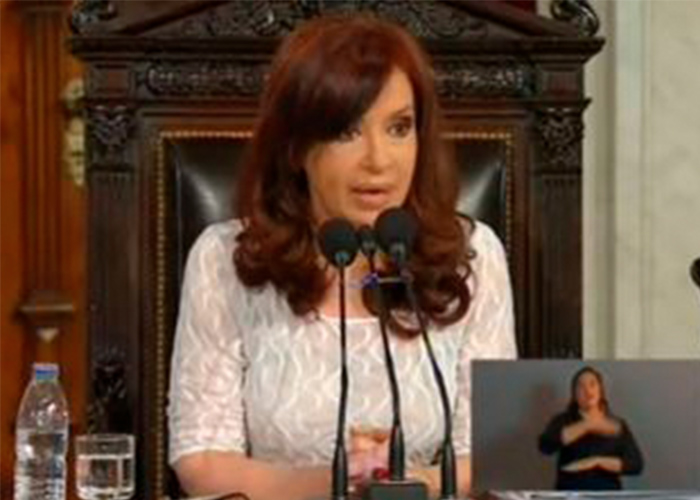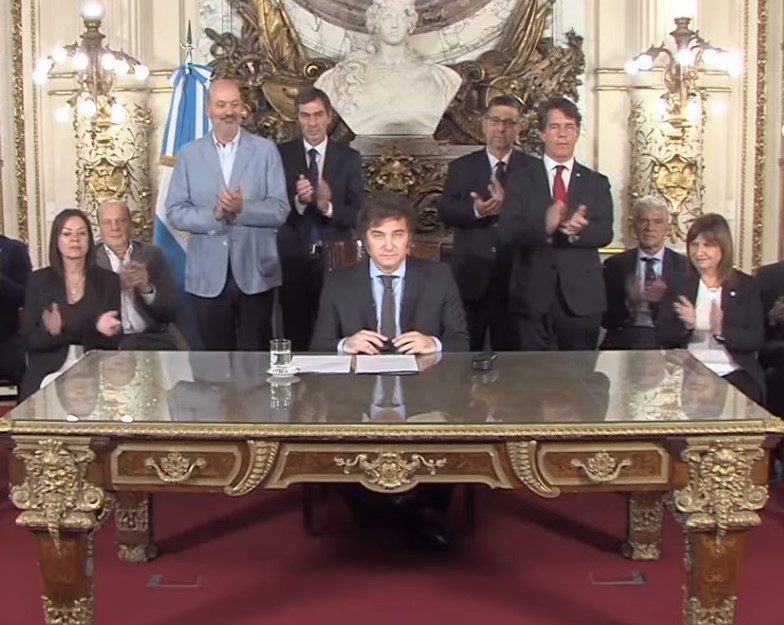Argentine president Cristina Fernández de Kirchner opened the 132nd assembly of the National Congress in Buenos Aires on Saturday, marking the start of the 2014 legislative sessions.
Argentine president Cristina Fernández de Kirchner opened the 132nd assembly of the National Congress in Buenos Aires on Saturday (March 1), marking the start of the 2014 legislative sessions.
She spoke of the re-industrialization of the country, citing the opening of more than 370 industrial parks and the opening of thousands of factories that were “generating added-value and substituting imports.”
Pharmabiz has compiled a list of such ventures related to the pharmaceutical industry:
The new Ezeiza industrial park has given rise to several ventures, with national pharmaceutical companies Dromex and Novocap leading the way. Bria Pharma also opened a new plant in the Tigre industrial park although the park itself has been in existence for 40 years.
Work is underway at the Pilar industrial park to build a new site for Craveri. Gador has already opened its hormone facility at the same location. Elea also began preparing to move its headquarters there from the neighborhood of Devoto but didn’t move forward with the project.
Several ventures are underway at the pharmaceutical center in Villa Soldati, including a new plant for drugmaker Montpellier, part of the Bagó group.
Price agreements
The president cited the December 2013 agreement signed with the pharmaceutical industry to rollback medication prices and said: “not only do we hope this will be respected, but that it will be improved on, because this is a sector with huge profitability in which the state is the principal buyer, accounting for more than 55% of purchases through the public health system, and PAMI (the senior citizens’ health insurance agency), etc.”
The president also mentioned recent advances in oncology. She said: “the other day an important breakthrough in oncology was made public and the team of investigators behind it was mentioned in passing as if they were from Mars (when actually) they depend on the Ministry of Science and Technology and are financed by the resources of the Argentine people.”
The president said she “wanted to provide numbers” regarding health management and went on to say that the infant mortality rate had fallen from 16.5 per 1000 births in 2003 to 11.1 per 1,000 in 2013.
She also highlighted the number of institutions carrying out organ transplants (up from eight to twenty) and referred to the battle against Chagas disease, the complexity in reducing vectors and vaccination plans, as well as the incorporation of the hepatitis A vaccine, increasing the vaccine calendar to 16.
Health insurance and statistics per capita
“Since more people are in work, trade union-run health insurance programs are beginning to have a strong impact again and a significant part of the population has medical cover once more, not only in the public sector but also though trade union-run health insurance,” the president said.
In an address of almost three hours, she said: “we have one of the best health systems in Latin America in terms of coverage. Since 2001, we have increased coverage from 51.9% to 63.9%.
“This is the result of increased employment and health insurance contributions. These, as well as medical cover for vulnerable groups have increased due to a great deal of legislation passed during this parliament”
Said legislation grants wider-ranging cover to a large part of the population with regards chronic illnesses “although many private health insurance providers and trade unions don’t like it because they say they have to spend a lot of money. But healthcare is an investment more than an expenditure,” the president said.
She also referred to the number of doctors per capita: “we have a very good quantity of doctors, although the problem is their distribution.”
We have 3.21 doctors for every 1000 inhabitants. The US has 2.42; Brazil 1.76, Uruguay 3.74 and the European Union 3.33. But in Argentina the problem is their location, she said, explaining that the majority of the doctors are based in the larger cities and that there are some towns where it is very difficult to get healthcare professionals.
She said that Argentina had the largest number of hospital beds per capita in the region – a total of 45 beds for every 10 thousand inhabitants compared with 30 in the US, 23 in Brazil, 20 in Chile, 30 in Mexico, 15 in Peru and only 13 in Paraguay.
State investment in health
“The national public expenditure on health has grown exponentially since 2003, reaching almost $20 billion. We spend more on public health than any other country in the region, including the US. This expenditure includes social security and senior citizens’ social security.
Of the total expenditure on health in Argentina, 64.4% is public and 35.6% comes from the private sector. In the US, the state contributes 48.2% and 51.8% is private. In Uruguay the figures are 65.3% and 34% and in Brazil 53% and 47% respectively.













